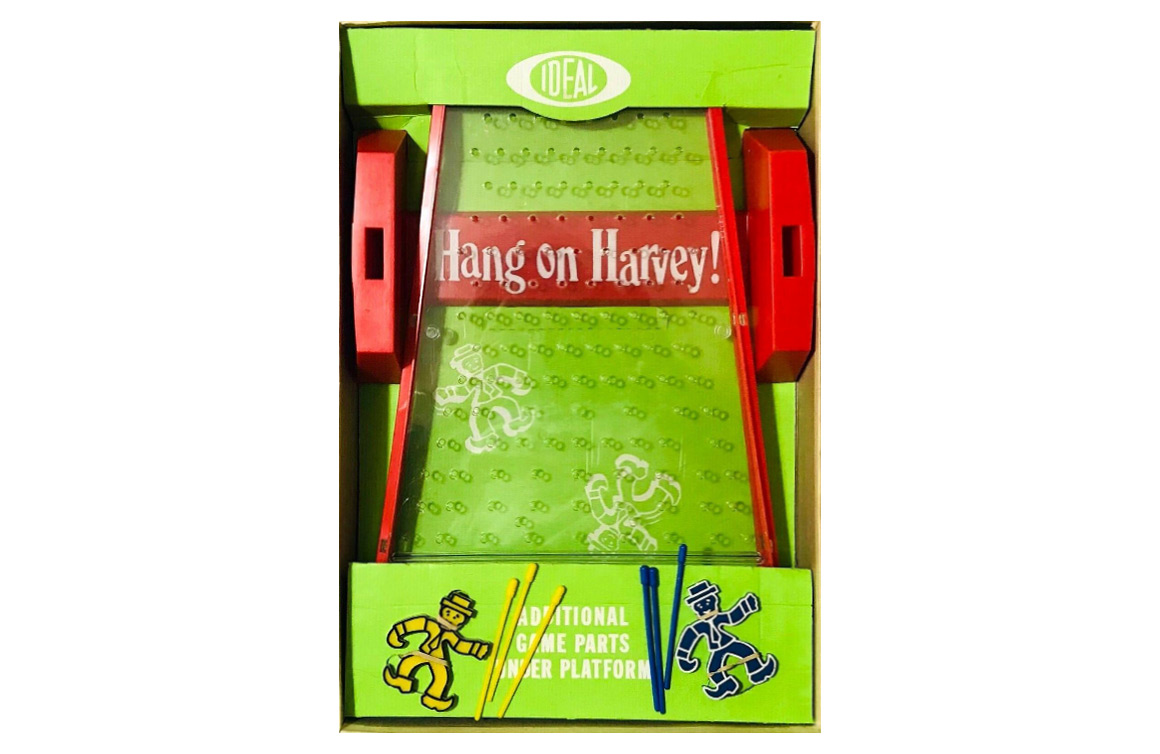Released in 1969 by Ideal, Hang on Harvey! challenged players to be the first to safely navigate Harvey to the bottom of the game board.
The simplicity of the strategy game, quick playing time, and modifications to increase the challenge made Hang on Harvey! a great option for people of all ages.
GAMEPLAY
Two opponents sat across from one another with the transparent, vertical game board between them. Each had four pegs and one Harvey character to work with. Each player inserted two of their pegs into the top row of the perforated game board. They then placed their Harvey game piece between the two panels of the board, resting him on their two pegs.
From there, opponents took turns placing and removing the pegs in an effort to smoothly guide Harvey to the bottom of the board. This was generally done row by row — if Harvey slipped and crashed from the board, he would need to restart the descent from the top.
Courageous players could enact bold moves in an effort to gain the upper hand. A player could use their opponent’s Harvey to help guide their own Harvey down the surface (much as the pegs were used). They could attempt to bump the competing Harvey from the game board altogether. Players wanting to take a gamble could move their pegs multiple rows down the board in hopes that Harvey would safely drop into position.
The first one to guide their Harvey to the bottom of the board won the game.
Those who mastered basic gameplay and wanted to increase the difficulty from the start of the game could challenge themselves to use fewer than the standard four pegs to support Harvey.
IN THE BOX
A complete game included a plastic base, clear vertical perforated game board, two Harveys (yellow and blue), and eight pegs (four each in yellow and blue). Instructions were printed inside the box top.
COLLECTOR CONSIDERATIONS
It’s fairly easy to find a complete Hang on Harvey! game through online marketplaces and resellers. While the plastic components could degrade and become fragile over time, replacement pieces can be found, a 3D printer can be used to fashion new components.
Note: If you buy something using the eBay link in this story, we may earn a small commission. Thank you for supporting independent toy journalism!


